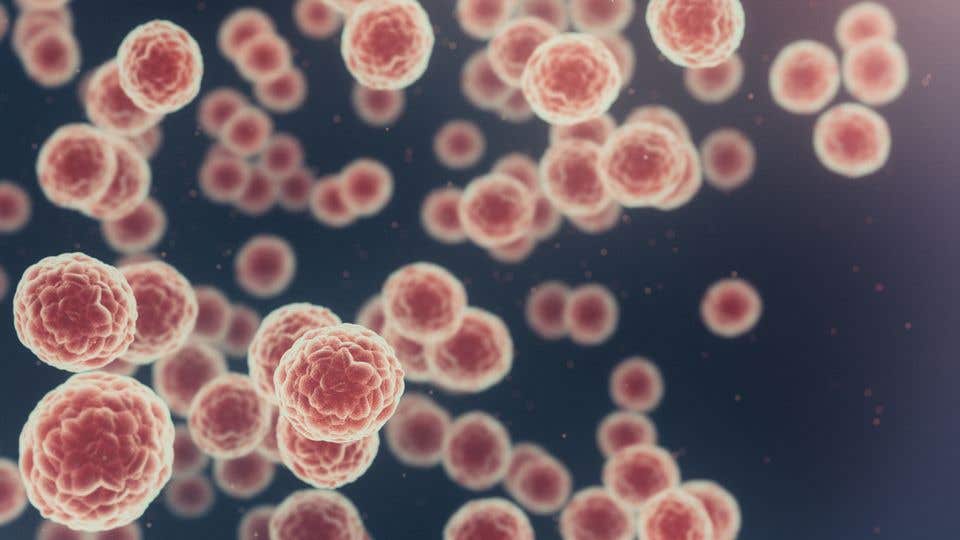Scientists create ultra-powerful ‘antitumor’ drug from calcium
Study revolves around a novel combination drug designed to combat cancer by manipulating calcium ions within tumor cells.

Study revolves around a novel combination drug designed to combat cancer by manipulating calcium ions within tumor cells. (CREDIT: Creative Commons)
In the ever-evolving landscape of medical research, a groundbreaking discovery has emerged from a collaborative effort involving scientists from South Korea and China.
This remarkable breakthrough, as detailed in a recent publication in the esteemed journal Angewandte Chemie, revolves around a novel combination drug designed to combat cancer by manipulating calcium ions within tumor cells. What sets this innovation apart is its ability to utilize the existing calcium ions present within the tumor tissue, eliminating the need for an external calcium source.
Calcium ions are indispensable for the proper functioning of biological cells, playing a crucial role in the mitochondria, often referred to as the cell's powerhouses. However, an excess of calcium can lead to a perilous imbalance in mitochondrial processes, ultimately causing the cell to suffocate.
Leveraging this physiological phenomenon, a research team led by Juyoung Yoon of Ewha Women's University in Seoul, South Korea, embarked on a mission to develop a synergistic antitumor drug capable of inducing a lethal "calcium storm" within tumor cells.
Related Stories
The scientists strategically targeted two distinct calcium channels within the cell: one residing in the outer membrane and the other located in the endoplasmic reticulum—an organelle responsible for storing calcium ions.
The outer membrane calcium channel activates in response to an influx of reactive oxygen species (ROS), while the endoplasmic reticulum channel is triggered by nitric oxide molecules.
To generate the necessary ROS for opening the outer membrane calcium channel, the research team employed a dye known as indocyanine green. This bioactive agent can be activated through exposure to near-infrared light, a process that not only stimulates the production of ROS but also raises the local temperature.
Graphical abstract: Designing reactive calcium-based nanogenerators to produce excess calcium ions (Ca2+) in tumor cells is an attractive tumor treatment method. (CREDIT: Angewandte Chemie)
Intriguingly, this increase in temperature serves as the catalyst for another active agent, BNN-6, which releases nitric oxide molecules to activate the channel in the endoplasmic reticulum.
After conducting successful trials on tumor cell lines, the researchers transitioned to testing an injectable formulation on mice with implanted tumors. To create a biocompatible combined drug, they ingeniously loaded the active ingredients into tiny modified porous silica beads.
These beads, harmless to the body, possess the remarkable ability to be recognized by tumor cells and transported inside them. Upon injecting the beads into the bloodstream of the mice, the scientists observed that the drug selectively accumulated within the tumor.
When exposed to near-infrared light, this localized drug delivery system effectively triggered the mechanism of action, resulting in the complete disappearance of the tumor in mice that received the preparation.
What makes this discovery even more promising is its potential applicability to a broader spectrum of biomedical research areas. The ion influx approach pioneered by this groundbreaking research may serve as a gateway to exploring new therapeutic avenues, activating ion channels beyond calcium, and potentially revolutionizing treatments in various related fields.
By harnessing the power of calcium ions and employing ingenious techniques to activate them within tumor cells, scientists are paving the way for a brighter and healthier future in the fight against cancer.
Note: Materials provided above by The Brighter Side of News. Content may be edited for style and length.
Like these kind of feel good stories? Get the Brighter Side of News' newsletter.
Joshua Shavit
Science & Technology Writer | AI and Robotics Reporter
Joshua Shavit is a Los Angeles-based science and technology writer with a passion for exploring the breakthroughs shaping the future. As a contributor to The Brighter Side of News, he focuses on positive and transformative advancements in AI, technology, physics, engineering, robotics and space science. Joshua is currently working towards a Bachelor of Science in Business Administration at the University of California, Berkeley. He combines his academic background with a talent for storytelling, making complex scientific discoveries engaging and accessible. His work highlights the innovators behind the ideas, bringing readers closer to the people driving progress.



